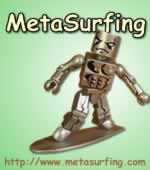As part of an article investigating the growing phenomenon of eBook piracy, a Scandinavian news outlet interviewed a 19 year-old self-confessed pirate who bragged about his activities. To counter his viewpoint a well known author contributed to the piece, stating that she abhors book piracy since it costs her huge amounts of money. However, her moral stance took a bit of a beating when her son let an embarrassing fact slip out.
This weekend Dagens Næringsliv ran an article about book piracy in which they interview 19-year-old Christian Berntsen, a self-confessed book pirate with eyes on the big time. With desires to become “one of the big boys”, Berntsen admitted to running servers in Lithuania which he believes are safe due to their location.
“Books are priced too high,” said Berntsen when justifying his work. “One of the reasons why the pirate world is so big, is that publishers take crazy prices for something that isn’t even in physical form.”
To counter his viewpoint, DN also interviewed Anne B. Ragde, an award-winning author. Unsurprisingly, Ragbe isn’t a huge fan of eBook sharing. In order to thwart piracy, she refused to allow her latest novel to be released as an audiobook since the format is popular with file-sharers and also denied the publication of Russian and Chinese versions.
“Piracy scares the hell out of me. I do not know what to say. I lose sleep at night over it,” said Ragbe. “I have figured out that I’ve lost half a million kronor ($72,500) on piracy of my books, maybe more.”
(...)In response to a question about her habits when it comes to buying or otherwise acquiring copied or counterfeit items, Ragde’s anti-piracy halo slipped more than a little.
“Pirated handbags? Yes, I do buy them,” she said. “I feel that the genuine Prada bags have such an inflated price.”
Ragbe then reportedly went on to list many other items she’s bought legitimately but was kindly assisted with a further confession by her son, Jo. If her halo had slipped with the bag admission, it was now set to strangle her.
“You have a pirated MP3 collection,” Jo added, helpfully. “We copied the first 1500 songs from one place and 300 from another.”
“Yes,” admitted Ragbe. “There were a lot of things on the iPod.”
More @ TorrentFreak